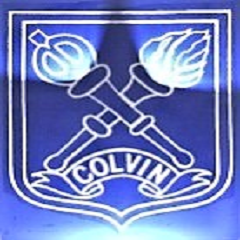
Gilbert Colvin Primary School
Design & Technology
Intent
At Gilbert Colvin, we believe design and technology prepares children to take part in the development of tomorrow’s rapidly changing world. The subject encourages children to become independent and creative problem solvers, both as individuals and as part of a team. It enables them to identify needs and opportunities and to respond by developing ideas, and eventually making products.
Our curriculum for design and technology aims to ensure that all pupils:
• develop the creative, technical and practical expertise needed to perform everyday tasks confidently and to participate successfully in an increasingly technological world.
• build and apply a repertoire of knowledge, understanding and skills in order to design and make high-quality prototypes and products for a wide range of users.
• critique, evaluate and test their ideas and products and the work of others.
• understand and apply the principles of nutrition and learn how to cook.
We build the cultural capital of our students by ensuring they have an understanding of contemporary design practice and design tradition.
 |
.png) |
 |
Implementation
Our design and technology curriculum uses resources from the DT Association, including 'Project on a Page'. We follow the 'Plan, Design, Make and Evaluate' approach to the teaching of DT as outlined in the National Curriculum Programmes of Study document. Our curriculum builds on the knowledge acquired during the early years and exposes children to more complex and challenging content as they progress. The children experience building and applying a range of knowledge, understanding and skills in order to design and make high-quality prototypes and products for a wide range of users.
Children build on the following skills whilst at Gilbert Colvin Primary School:
Design
- Use research and develop design criteria to inform the design of innovative, functional, appealing products that are fit for purpose.
- Generate, develop, model and communicate their ideas through discussion, annotated sketches, cross-sectional diagrams and prototypes.
Make
- Select from and use a wider range of tools and equipment to perform practical tasks, for example, cutting, shaping, joining and finishing, as well as chopping and slicing accurately.
- Select from and use a wider range of materials, ingredients and components, including construction materials, textiles and ingredients, according to their functional properties and aesthetic qualities.
Evaluate
- Investigate and analyse a range of existing products.
- Evaluate their ideas and products against their own design criteria and consider the views of others to improve their work.
Technical knowledge
- Apply their understanding of how to strengthen, stiffen and reinforce more complex structures.
- Understand and use mechanical systems in their products.
- Understand some of the ways that food can be processed and the effect of different cooking practices, including baking and grilling.
Impact
Class teachers ensure that the children in their class have covered the relevant knowledge and skills using the subject-specific progression map. Teachers track and evidence progress against objectives at the end of each unit. Subject leaders carry out 'deep dive' subject monitoring which includes a planning and book scrutiny, learning walk/lesson observations and pupil voice.
What our children think about Design and Technology at Gilbert Colvin Primary School
|
 |
|